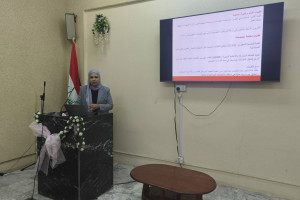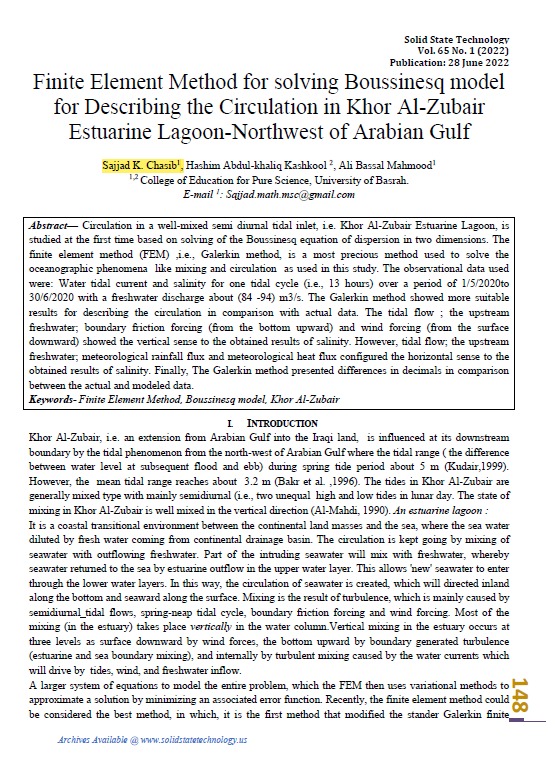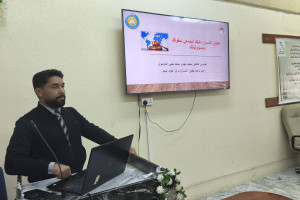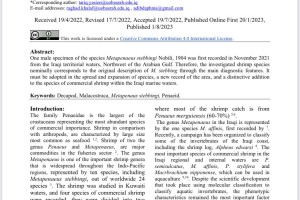

A research team consisting of Dr. Ali Bassal Mahmood and Sajjad Kadhim Chasib, teaching-staff in the Department of Marine Physics. Dr. Hashim Abdul-khaliq Kashkool teaching-staff in the College of Education for Pure Science have published a scientific research entitled:-
"Finite Element Method for solving Boussinesq model for Describing the Circulation in Khor Al-Zubair Estuarine Lagoon-Northwest of Arabian Gulf"
In the US Journal classified within the platforms of Scopus and issued by the US publishing Co.: PennWell
The study included the idea of Circulation in a well-mixed semi diurnal tidal inlet, i.e. Khor Al-Zubair Estuarine Lagoon, was studied at the first time based on solving of the Boussinesq equation of dispersion in two dimensions. The finite element method (FEM) ,i.e., Galerkin method, is a most precious method used to solve the oceanographic phenomena like mixing and circulation as used in this study. The observational data used were: Water tidal current and salinity for one tidal cycle (i.e., 13 hours) over a period of 1/5/2020to 30/6/2020 with a freshwater discharge about (84 -94) m3/s. The Galerkin method showed more suitable results for describing the circulation in comparison with actual data. The tidal flow ; the upstream freshwater; boundary friction forcing (from the bottom upward) and wind forcing (from the surface downward) showed the vertical sense to the obtained results of salinity. However, tidal flow; the upstream freshwater; meteorological rainfall flux and meteorological heat flux configured the horizontal sense to the obtained results of salinity. Finally, The Galerkin method presented differences in decimals in comparison between the actual and modeled data.





.jpg)

.png)